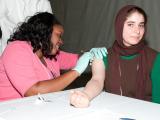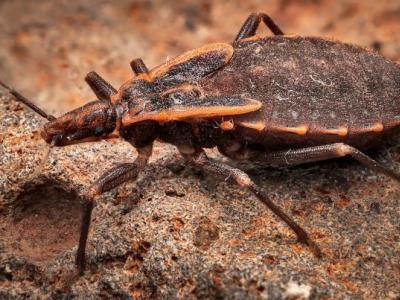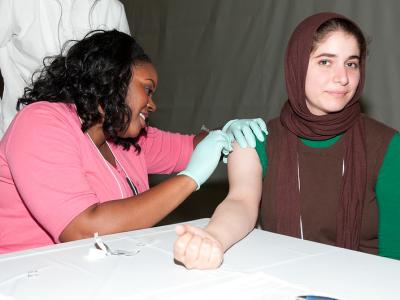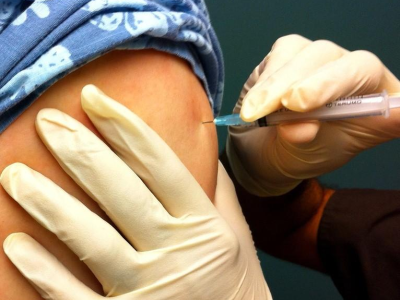Nov 11, 2011
Some US flu indicators up slightly; overall activity still low
Some measures of US influenza activity ticked up faintly last week, but activity remained low overall, the Centers for Disease Control and Prevention (CDC) reported yesterday. The proportion of outpatient visits for influenza-like illness (ILI) in the CDC surveillance network was 1.3%, up from 1.2% the week before but well below the national baseline of 2.4%. Forty-nine states, the same number as last week, reported minimal ILI activity; Idaho had low activity. From the standpoint of geographic spread, Virginia reported local flu activity, 25 states had sporadic cases, and 24 states reported no activity; in the previous week, 20 states had sporadic cases and 30 states had none. The fraction of deaths attributed to pneumonia and flu was 6.3%, compared with an epidemic threshold of 6.8%. No pediatric deaths related to flu were reported. Only 11 (0.6%) of 1,833 respiratory specimens tested and reported to the CDC were positive for flu.
CDC flu update for week ending Nov 5
Previous weekly update
Viral co-infection rates similar for hospitalized, community H1N1 cases
A UK study published today found no difference in levels of respiratory virus co-infection between hospitalized and non-hospitalized patients with 2009 H1N1 pandemic flu (pH1N1). Researchers analyzed data from 450 respiratory specimens taken during the 2009-10 pandemic from patients with flu-like illness in the UK West Midlands region who were tested by polymerase chain reaction for other viruses. Of the specimens, 231 were from hospitals, of which 151 (65%) were H1N1-positive, and 219 were from the community, of which 126 (58%) were pH1N1-positive. (No other influenza virus was detected in the samples.) Of the pH1N1-positive hospital specimens, 5.3% (8/126) contained another virus, compared with 6.3% of the pH1N1-positive community specimens. Of the pH1N1-negative specimens, co-infection rates were 30.0% (24/80) for hospital samples and 33.3% (31/93) for community samples. Rhinovirus was the most common pathogen found, accounting for 47.4% (36/76) of detections, followed by parainfluenza and adenovirus. The researchers conclude that, because of a lack of statistical difference in co-infection rates between inpatients and outpatients, "underlying factors were likely to be more significant than viral co-infections in determining severity of influenza A(H1N1) disease."
Nov 11 Epidemiol Infect abstract
Study: Antibodies to seasonal H1N1 may have protected against 2009 H1N1
Having antibodies to seasonal H1N1 influenza viruses appeared to protect against pH1N1 flu, according to a study of 513 healthy adults published yesterday in Clinical Infectious Diseases. Texas researchers measured volunteers' serum antibody levels at enrollment in fall 2009 as well as in spring 2010, after the pandemic had peaked. They excluded those who had received the pH1N1 vaccine. Of the 513 adults, 23% became infected, 31 of whom had moderate to severe illness. As expected, the investigators found fewer pH1N1 infections with increasing pH1N1 antibodies. But they also found a decreasing frequency of pH1N1 infections as antibodies to seasonal H1N1 increased.
Nov 10 Clin Infect Dis abstract


















